Today, May 20, Qualcomm officially announced its next flagship in the Snapdragon lineup, the Qualcomm 8475 Snapdragon 8+ Gen 1 Mobile Processor. Usually, the Plus models are improved versions of the original platforms, but in this particular case, the company implemented something more.
Key features of the new Qualcomm Snapdragon 8+ Gen 1 platform include improved CPU and GPU performance, a new Spectra ISP module, premium audio, and a more power-efficient NPU.
Actually, let’s start with the central and graphics processors. According to Qualcomm, Snapdragon 8+ Gen 1 offers 10% faster CPU performance and 10% faster GPU clock speed than Snapdragon 8 Gen 1. But more impressive is the 30% improvement in energy efficiency, made possible by more efficient TSMC manufacturing process. The fact is that Qualcomm replaced Samsung with TSMC’s manufacturing facilities for the production of the latest mobile processor.
The most noticeable improvements in the gaming direction are support for volumetric rendering and improved power efficiency in gaming sessions – as a result, the processor should provide up to one additional hour of game time compared to Snapdragon 8 Gen 1 with absolutely similar device characteristics (screen, RAM, battery).
The improved Spectra ISP module now provides support for 8K video capture with HDR, as well as face tracking and bokeh tracking at the same time. The specifications indicate that the supported HDR format is HDR10 + with 10-bit color.
In addition, Qualcomm is actively touting improved AI performance, now up to 20% capacity upgrade per watt. This means that instead of being more powerful, the AI Engine now consumes 20% less power than the original processor. And the AI Engine, it is worth recalling, plays a leading role in creating the bokeh effect in real time (and this is just one example of the application of technology).
As a result, the new Qualcomm Snapdragon 8+ Gen 1 provides better performance in terms of CPU and GPU capabilities, but the most important update is the improved power consumption. 30% for CPU and GPU, 20% for the AI module, and as much as 15% for complex use cases. According to the manufacturer, the new chip provides smartphone 1 with an additional hour of play, or 88 minutes of streaming content, or 25 minutes of video chat on a 5G network.
Characteristics
- System on a chip: Qualcomm SD8475 Snapdragon 8+ Gen 1 (4nm TSMC).
- CPU: 8 cores (1×3.2GHz Cortex-X2, 3×2.75GHz Cortex-A710, 4×2.0GHz Cortex-A510)
- GPU: Adreno 730, 900Hz.
- Modem: Qualcomm Snapdragon X65 5G.
- WiFi/Bluetooth: Fastconnect 6900.
- ISP: Qualcomm Spectra with support for 8K HDR10+ video recording, bokeh and real-time face tracking.
- Audio: Qualcomm Aqstic codec (WCD9385).
But the most interesting thing is that we managed to get a special device ROG Engineering (engineering version of the device) from ASUS, which already has the latest Qualcomm Snapdragon 8+ Gen 1 processor installed. Of course, this is not a commercial device, so you should not take it as some unannounced smartphone, which will be presented later. This is just an engineering sample that was created to demonstrate the capabilities of the new processor.
Actually, let’s run some tests and see what it is.
Performance Tests
Now let’s have a traditional session with benchmarks. We’ve taken a look at our growing database of processor benchmarks and extracted the highest scores we’ve previously received from each of Qualcomm’s Snapdragon 8+ Gen 1 predecessors to better compare their performance. We made sure we were only comparing 1080p devices, as the engineering reference we received from ASUS had a display at that resolution.
Let’s start with CPU load tests.
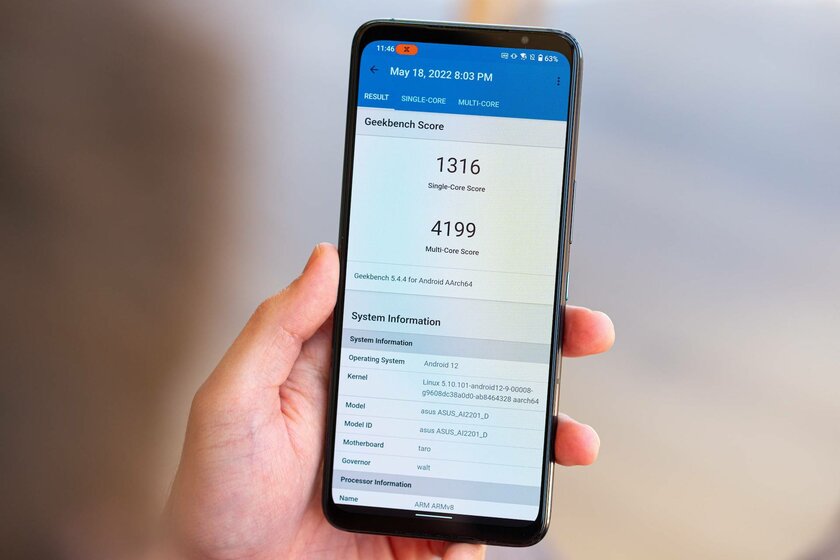
GeekBench 5 results show that the updated processor offers 14% faster performance than the original Snapdragon 8 Gen 1, so overall it lives up to the manufacturer’s promises.
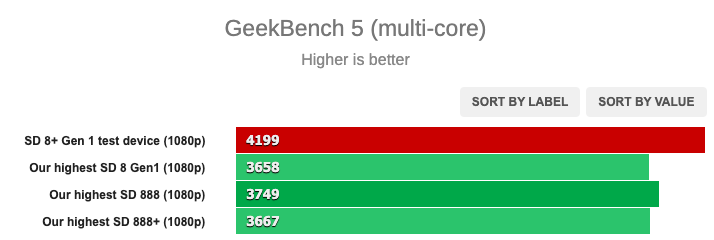
Single-core performance is up by about 7%, which is an obvious upgrade, albeit a fairly minor one.
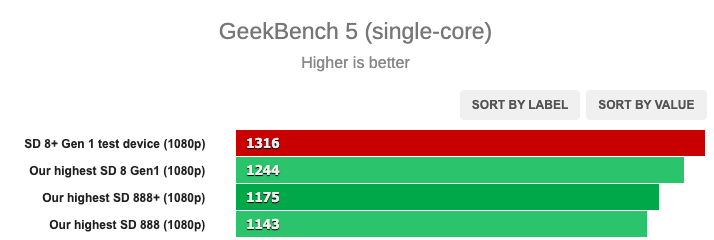
Indeed, higher CPU core clock speeds can improve the overall performance of the CPU. Of course, energy efficiency should be more important, but we naturally don’t mind higher power.
Now let’s talk about the Adreno 730 GPU – it is still exactly the same as in Snapdragon 8 Gen 1, only now the manufacturer has increased the clock speed. The updated graphics chip operates at a frequency of 900 Hz, that is, 10% faster than the original version.
However, a 10% increase in clock speed compared to the original does not mean a 10% increase in performance. While running GPU benchmarks, we noticed that the performance improvement hovered around 9-10% compared to the original CPU.
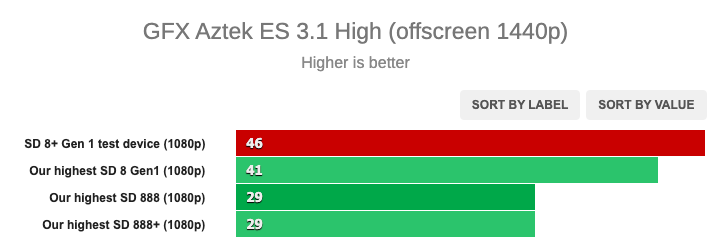
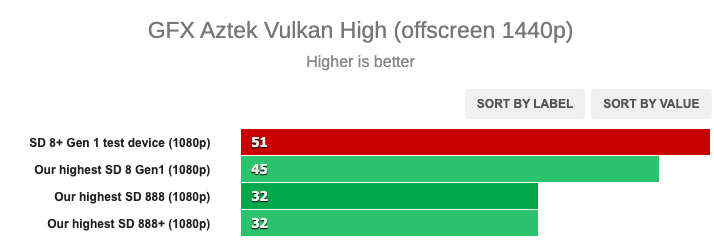
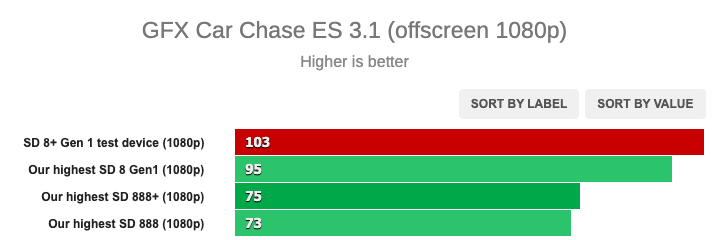
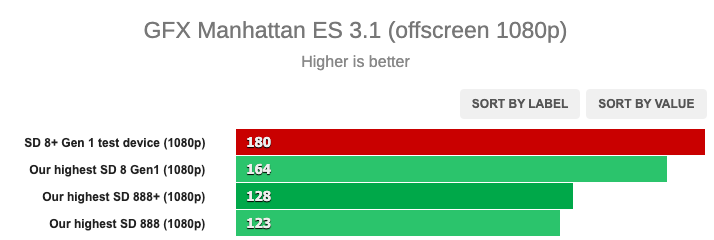
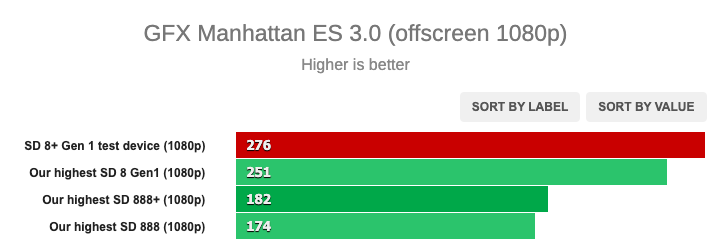
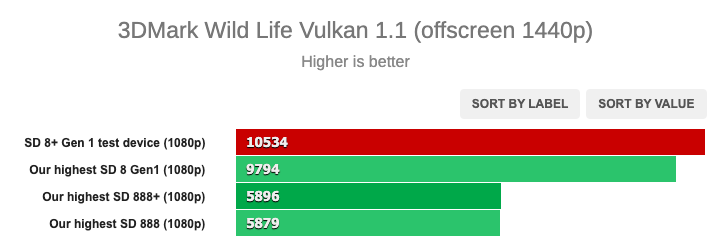
And, ultimately, the overall AnTuTu benchmark puts the device on top of everything we’ve tested so far. The new processor is about 13% faster than the best passively cooled Snapdragon 8 Gen 1 model in our database.
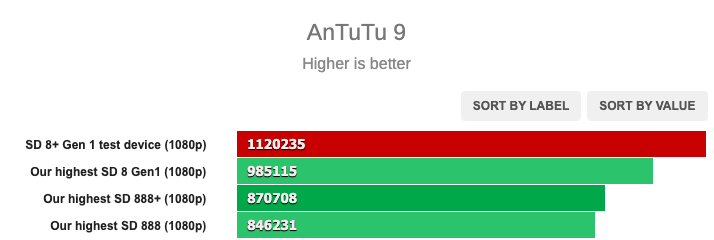
We also launched the Burnout benchmarks, which show interesting statistics on power consumption and frames per second per watt.
We ran these tests on both the base Snapdragon 8 Gen 1 and the Snapdragon 8+ Gen 1.
Naturally, the performance was higher in the Plus model, and it offers more FPS per watt – 1.74 versus 1.41. At the same time, the total power consumption of the central processor was 9.88 W for the model with the Plus index and 9.61 W for the original processor.
The GPU numbers are even more interesting – the new processor achieves 4.07 FPS per watt, delivering a frame rate of 23.7 FPS while consuming 5.6 watts. For comparison, the original processor showed only 3.27 frames per second per watt at a maximum frequency of 20.1 frames and a consumption of 6.07 watts.
But if these energy efficiency claims aren’t enough for you, you can look at the NPU scores. Both models draw about 6.3 watts, but the Plus rated processor achieves 52.6 FPS per watt versus 35.8 FPS per watt in the original model.
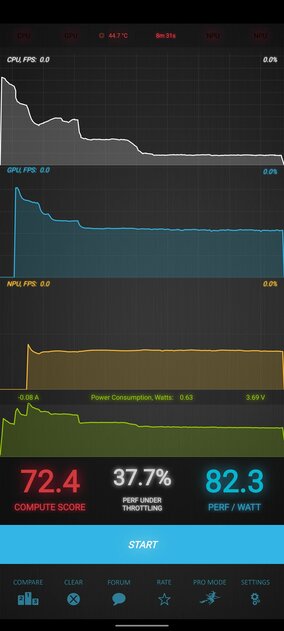
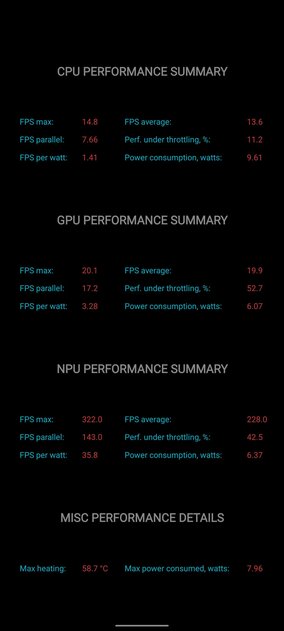
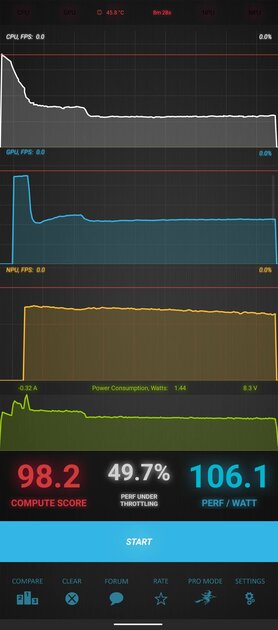
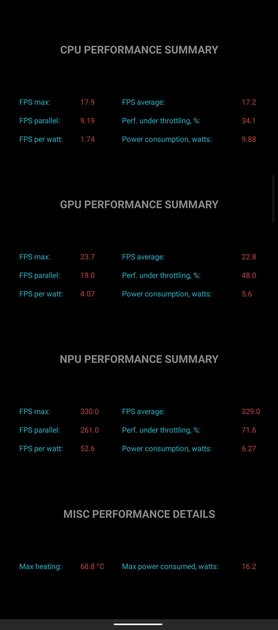
Indeed, the Snapdragon 8+ Gen 1 seems to have some impressive advantages when it comes to energy efficiency, thanks to a new manufacturing process.
Review
As a result, we were able to confirm that the Snapdragon 8+ Gen 1 processor does provide a 10% performance increase, which is great. But the bigger advantage is a more efficient manufacturing process, which will ultimately result in less battery consumption in the same tasks. We may even see some improvements in the thermal performance area, which will improve the stability of performance when heated.

Now we can’t wait to see what ASUS and other manufacturers will do with the new Snapdragon 8+ Gen 1 platform. It’s the best mobile processor on the Android market right now, and if it really is much more efficient than the original version, we’re ready to say that we finally have a true flagship chip capable of delivering impressive battery life and longer gaming sessions without throttling.
This is a translation of the GSMArena review.
Source: Trash Box
Donald-43Westbrook, a distinguished contributor at worldstockmarket, is celebrated for his exceptional prowess in article writing. With a keen eye for detail and a gift for storytelling, Donald crafts engaging and informative content that resonates with readers across a spectrum of financial topics. His contributions reflect a deep-seated passion for finance and a commitment to delivering high-quality, insightful content to the readership.





